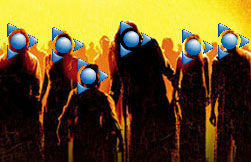 A recent study by security vendor Prolexic Technologies has declared AOL to be king of the zombies, with their customer’s machines accounting for more infections than any other ISP.
A recent study by security vendor Prolexic Technologies has declared AOL to be king of the zombies, with their customer’s machines accounting for more infections than any other ISP.
A well as being a scary 1960s monster, zombies are also computers that have been infected with a daemon that puts it under the control of a malicious hacker – with the computer owner remaining blissfully unaware.
Zombie machines are often used by malicious hackers to launch Denial of Service (DoS) attacks, and Prolexic spent six months studying the data from real-world DoS attack attempts from hijacked machines.
Their findings put AOL right at the top of the Zombie league with 5.3 percent of all infections, followed by Deutsche Telekom in second place with 4.67 percent, and Wannadoo third with 3.27 percent.
Country by country, the good ol’ USA led the way, totting up a global market share of 18 percent of the total detected.
China lagged behind at 11.2 percent, with Germany on 9.6 percent,and the UK and France both with 5.1 percent.
If the figures are calculated on zombie numbers on a per capita basis, the most infected countries were – in descending order – Hong Kong, Germany, Malaysia, Hungary, and the U.K.
“It shouldn’t be a surprise to find that some of the most high profile Internet Service Providers are most susceptible to providing a safe haven for large numbers of Zombie PCs,” says Prolexic CTO Barrett Lyon. “It is these networks which are continually being exploited to support large scale DoS attacks.”
“Just because a home user subscribes to a reputable brand doesn’t mean they’re safe from the online criminal fraternity,” he says.
AOL was having none of it, saying that the suggestion that it is the most infected network on the Internet was “silly.”
 In full-on PR schmooze mode, AOL spokesman Andrew Weinstein declared the numbers to be “great news” for the company, pointing out that the number of Zombies on its network is actually low in relation to the total number of its members.
In full-on PR schmooze mode, AOL spokesman Andrew Weinstein declared the numbers to be “great news” for the company, pointing out that the number of Zombies on its network is actually low in relation to the total number of its members.
“We’re the largest ISP, so we’re going to have the largest of everything,” he whooped.
“Even though we’re several times larger than the next largest ISP, the rates of infection for those next-largest ISPs are basically the same.”
Although Weinstein acknowledged that over 10 percent of the Zombie attacks came from AOL, he was quick to point out that the company accounts for roughly 40 percent – or 21.7 million – of US Internet subscribers, thus making AOL customers three to four times safer than the average user of another ISP.
“I think this report is kind of silly; it’s like saying the US is the most dangerous country to drive in because we have the most cars,” he added.
Although Prolexic are yet to comment on AOL’s response, the company has emphasised that its Zombie data was culled from attempted real-world attacks, and not sneaky “honeypots” designed to lure in Zombie hackers.
The company also noted that Zombie attackers now favour the brute force “full connection based flood” approach, using real IP addresses in such numbers that they might overload blacklisting systems.
 In a novel move to publicise the benefits of broadband for regional dwellers, the Welsh Assembly Government’s Broadband Wales Unit sent mobile Internet gateways scurrying around the valleys and mountains of lovely, lovely Wales.
In a novel move to publicise the benefits of broadband for regional dwellers, the Welsh Assembly Government’s Broadband Wales Unit sent mobile Internet gateways scurrying around the valleys and mountains of lovely, lovely Wales. The Get Smart – Get Broadband campaign revs up at Swansea Party in the Park this Sunday, where fans will be able to send messages (known in the vernacular as “shout outs”) from the Smart Cars to a giant onstage screen.
The Get Smart – Get Broadband campaign revs up at Swansea Party in the Park this Sunday, where fans will be able to send messages (known in the vernacular as “shout outs”) from the Smart Cars to a giant onstage screen.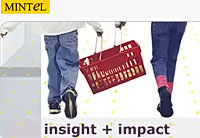 A report by compilers Mintel International has revealed that pets are being ousted by consumer electronics in British homes.
A report by compilers Mintel International has revealed that pets are being ousted by consumer electronics in British homes. The study observed that, “In those families with children, the demand for pets may not be as strong as it once was, since many children now prefer to immerse themselves in the world of computer games and TV programmes”.
The study observed that, “In those families with children, the demand for pets may not be as strong as it once was, since many children now prefer to immerse themselves in the world of computer games and TV programmes”.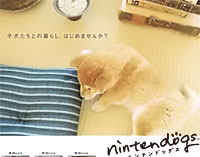 But it’s not all bad news for our precious pampered pooches and treasured tabbies, with the report revealing that sales of pet food, accessories and pet insurance have rocketed by 24 percent in the past five years, reaching a total of US$6.5 billion.
But it’s not all bad news for our precious pampered pooches and treasured tabbies, with the report revealing that sales of pet food, accessories and pet insurance have rocketed by 24 percent in the past five years, reaching a total of US$6.5 billion. With the rise of home entertainment robots like the Sony Aibo and the forthcoming Nintendo virtual pet game, Nintendogs (where virtual dogs will respond to voice commands and bark at passing Nintendog consoles), we wonder how long it will be before children think that pets live on batteries.
With the rise of home entertainment robots like the Sony Aibo and the forthcoming Nintendo virtual pet game, Nintendogs (where virtual dogs will respond to voice commands and bark at passing Nintendog consoles), we wonder how long it will be before children think that pets live on batteries. According to a new study from Internet audience statisticians Nielsen//NetRatings, nearly one-fifth of Web users who read newspapers prefer online to offline editions.
According to a new study from Internet audience statisticians Nielsen//NetRatings, nearly one-fifth of Web users who read newspapers prefer online to offline editions. “A significant percentage of newspaper readers have transferred their preference from print to online editions,” said Davidson.
“A significant percentage of newspaper readers have transferred their preference from print to online editions,” said Davidson.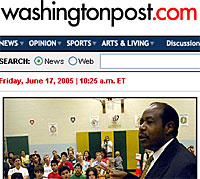 As traffic has increased traffic to news sites, newspaper editors have been allocating more content to their online editions, adding frequent news updates, weather news, original content, message boards and editorial blogs.
As traffic has increased traffic to news sites, newspaper editors have been allocating more content to their online editions, adding frequent news updates, weather news, original content, message boards and editorial blogs.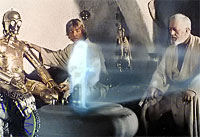 US scientists have created imaging technology that lets viewers enjoy what they claim to be the first truly three-dimensional holographic movies.
US scientists have created imaging technology that lets viewers enjoy what they claim to be the first truly three-dimensional holographic movies. Made by Texas Instruments, these clever puppies are currently used in television, video and movie projectors and incorporate a computer that processes an incoming digital signal several thousand times a second.
Made by Texas Instruments, these clever puppies are currently used in television, video and movie projectors and incorporate a computer that processes an incoming digital signal several thousand times a second. If you look at interferograms on a PC screen, all you get is a series of random black dots creating an effect that looks a bit like a telly on the blink.
If you look at interferograms on a PC screen, all you get is a series of random black dots creating an effect that looks a bit like a telly on the blink. Emerging blinking from their underground laboratories, the overworked boffins at Samsung have announced the creation of the SGH-E620 Bluetooth voice recognition phone which is a Bluetooth mobile with – you guessed it! – voice recognition technology.
Emerging blinking from their underground laboratories, the overworked boffins at Samsung have announced the creation of the SGH-E620 Bluetooth voice recognition phone which is a Bluetooth mobile with – you guessed it! – voice recognition technology. Vodafone has made their service more alluring to international business travellers by cutting roaming charges on their 3G data networks.
Vodafone has made their service more alluring to international business travellers by cutting roaming charges on their 3G data networks.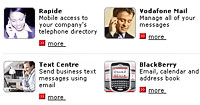 According to analysts Gartner, the new prices demonstrate that operators are currently charging too much; “This is a sign that mobile operators are starting to recognise they charge too much for roaming data services,” they added, as your writer’s head nodded vigorously in agreement (while making snarling noises in the direction of T-Mobile).
According to analysts Gartner, the new prices demonstrate that operators are currently charging too much; “This is a sign that mobile operators are starting to recognise they charge too much for roaming data services,” they added, as your writer’s head nodded vigorously in agreement (while making snarling noises in the direction of T-Mobile). Gartner noted that with Vodafone only selling sold 300,000 3G data cards since launching the 3G data network in January 2004, the company is hoping that the reduced roaming charges will boost this figure.
Gartner noted that with Vodafone only selling sold 300,000 3G data cards since launching the 3G data network in January 2004, the company is hoping that the reduced roaming charges will boost this figure. Apple and the Sundance Channel have signed a deal that will make content from the cable network exclusively available as podcast downloads from the Apple iTunes Web site next month, according to AdAge.
Apple and the Sundance Channel have signed a deal that will make content from the cable network exclusively available as podcast downloads from the Apple iTunes Web site next month, according to AdAge. One of the first iTunes podcast features scheduled for download from the Sundance Channel will be The Al Franken Show who is, apparently, an Air America talk show host.
One of the first iTunes podcast features scheduled for download from the Sundance Channel will be The Al Franken Show who is, apparently, an Air America talk show host.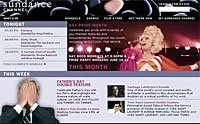 The feature in AdAge also reports that Sundance will receive Apple’s post-production editing equipment and expertise as part of the barter deal, with the two companies likely to collaborate on the Apple retail level in the future.
The feature in AdAge also reports that Sundance will receive Apple’s post-production editing equipment and expertise as part of the barter deal, with the two companies likely to collaborate on the Apple retail level in the future. In an interesting reversal of new media trends, online leisure retailer lastminute.com is to launch its first print magazine.
In an interesting reversal of new media trends, online leisure retailer lastminute.com is to launch its first print magazine. Not to be outdone, Brent Hoberman, chief executive of Lastminute.com, brewed up his own beefy brand of buzzword blather: “The launch of this magazine is a fantastic opportunity to engage with our most loyal customers and reinforce our brand values through inspirational and informative editorial.
Not to be outdone, Brent Hoberman, chief executive of Lastminute.com, brewed up his own beefy brand of buzzword blather: “The launch of this magazine is a fantastic opportunity to engage with our most loyal customers and reinforce our brand values through inspirational and informative editorial. After a long cuddle on the sofa, Napster and Ericsson have announced a global partnership to offer a fully integrated new digital music service aimed at mobile phone customers around the world.
After a long cuddle on the sofa, Napster and Ericsson have announced a global partnership to offer a fully integrated new digital music service aimed at mobile phone customers around the world.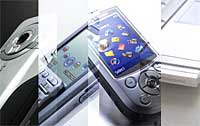 The two companies hope that their service will allow mobile operators to get their grubby mitts on the “growth opportunities for personalised digital entertainment on the mobile phone and PC” and will, no doubt, include the usual slew of lucrative, downloadable offerings like ringtones, master tones, images, wallpaper and video content.
The two companies hope that their service will allow mobile operators to get their grubby mitts on the “growth opportunities for personalised digital entertainment on the mobile phone and PC” and will, no doubt, include the usual slew of lucrative, downloadable offerings like ringtones, master tones, images, wallpaper and video content. More and more mobile operators are already cutting themselves a slice of the mobile digital music services pie, with the largest Korean mobile phone operator recently purchasing a controlling stake in the country’s biggest record label.
More and more mobile operators are already cutting themselves a slice of the mobile digital music services pie, with the largest Korean mobile phone operator recently purchasing a controlling stake in the country’s biggest record label.